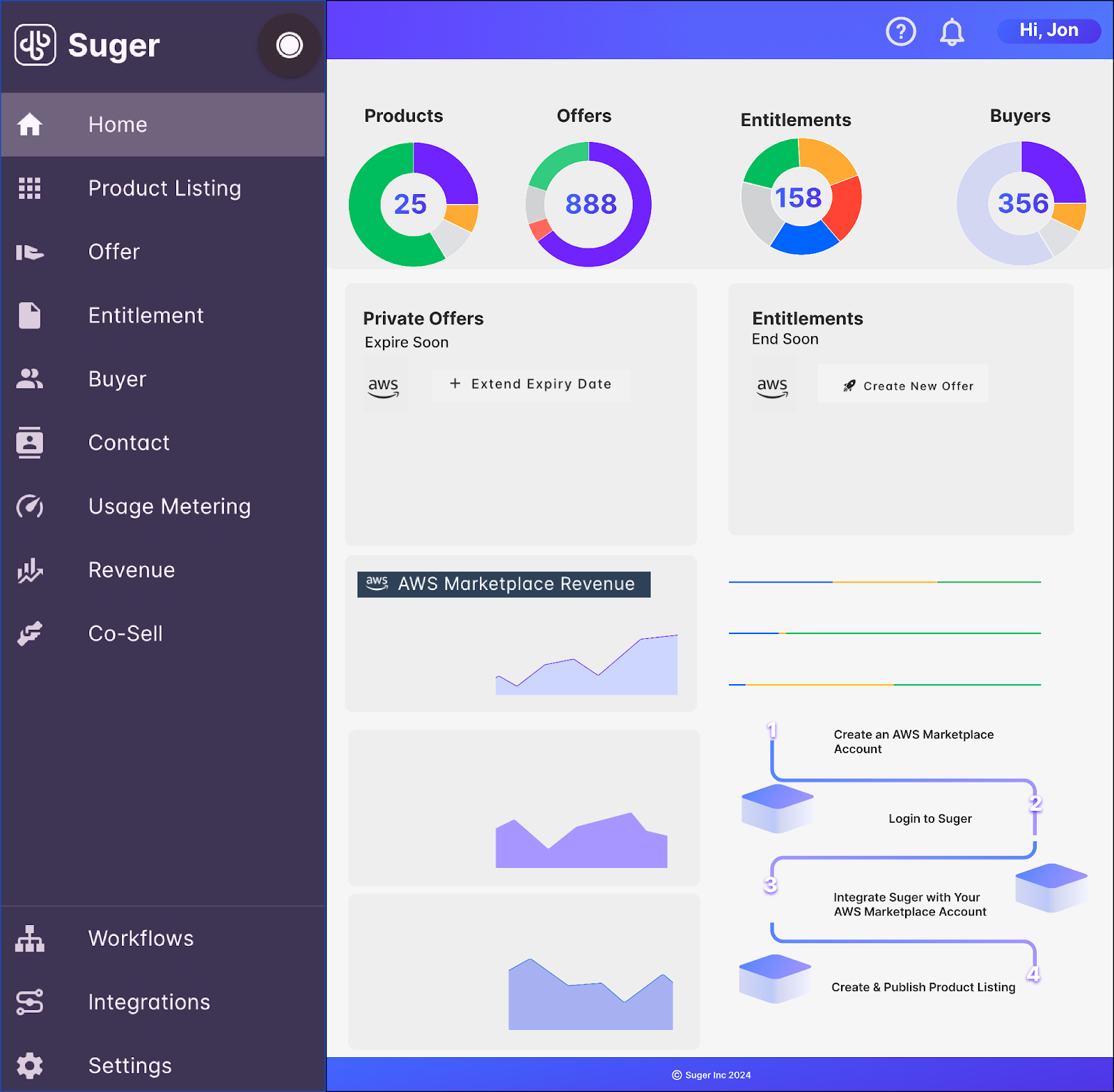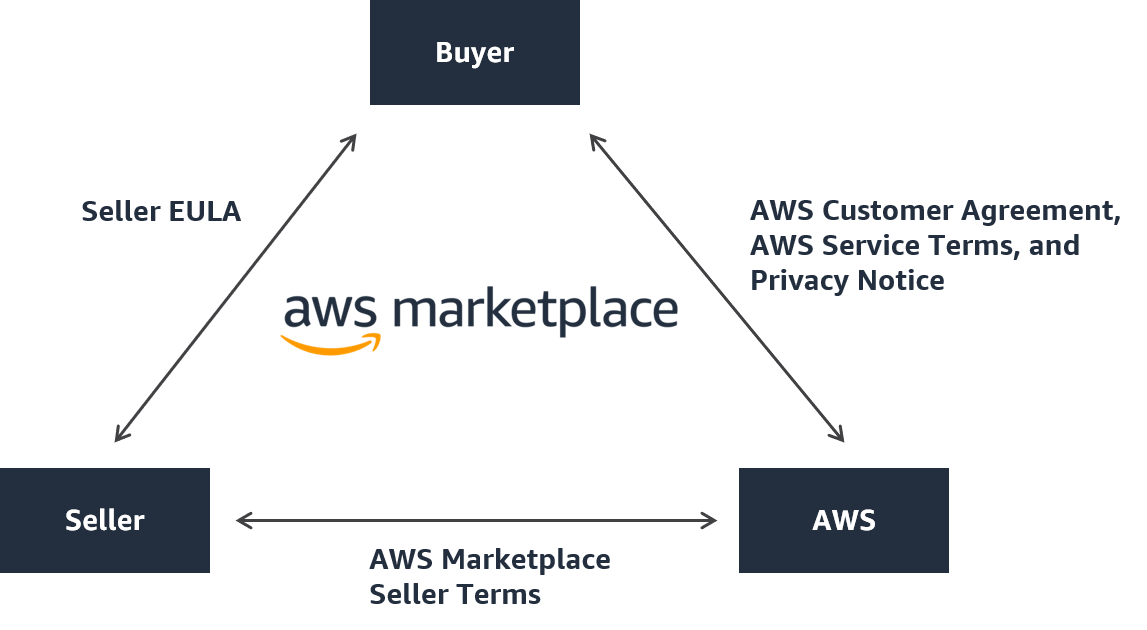Product-led growth has been a prevalent business -3.png?width=244&height=255&name=image%20(2)-3.png) strategy over the past two decades, relying on the product itself as the primary driver of customer acquisition, retention, and monetization. The AWS Marketplace presents a lucrative opportunity for SaaS providers to reach a massive customer base and streamline their sales and billing processes with a self-service motion. This allows users to understand, use, and see the value of the product without a traditional sales process.
strategy over the past two decades, relying on the product itself as the primary driver of customer acquisition, retention, and monetization. The AWS Marketplace presents a lucrative opportunity for SaaS providers to reach a massive customer base and streamline their sales and billing processes with a self-service motion. This allows users to understand, use, and see the value of the product without a traditional sales process.
In this post, we’ll discuss best practices and common mistakes in driving trials and public offers through marketplaces and how Suger helps PLG companies accelerate new user sign-ups.
Listings Configuration
Product listings are often configured only for private offers. However, there are three types of listings:
- Contract: Upfront or scheduled billing.
- Subscription: Metered billing based on usage.
- Combined: SaaS contract pricing with PAYG for additional usage.
To construct a listing for a PLG motion, consider the following options:
Option 1: Contract Configure the lowest denominated pricing with a monthly option. If the buyer chooses auto-renewal when creating the public offer, the customer can choose the number of units. For example, [Customer A] structured its product listing to allow flexibility in unit selection.

Exhibit A: Example of Contract Listing Pricing
Option 2: Pay-As-You-Go (PAYG) Set up your listing based on a credits model, allowing the buyer to start using your product and be billed based on usage. Publish your pricing separately on your website to show what a single unit of credit translates to in terms of unit dimensions. This model requires mapping source dimensions to the revenue unit on the backend for reporting.
Exhibit B: PAYG Listing Pricing (left) and Website Pricing (right)

Option 3: Combined Configure your listing based on a credits model but break it out by different tiers.This model provides flexibility for both public and private offers,making it suitable for PLG and SLG.
.png?width=395&height=377&name=image%20(7).png)
Exhibit C: Combined Listing Pricing
User Sign-Up Configuration
Set a fulfillment URL to which the user will be redirected once the entitlement is created. There are two methods:
Option 1: Custom Hosted Landing Page Integrating a web form can help capture user information for personalized follow-ups and lead nurturing. This is preferred for listings focused on private offers.
Option 2: Sign-Up Redirect to Existing Landing Page Redirecting users to your cloud marketplace listing from your website can streamline the sign-up process and provide a better buyer experience. This method requires more upfront investment but offers seamless integration with marketplace billing.
Scaling Public Offers
Tip #1: Highlight AWS Marketplace Payment on Pricing Page
Make AWS Marketplace payment options prominent on your pricing page to increase awareness and drive traffic to your marketplace listing. The key is to drive awareness with potentially interested users that getting started and procuring through the marketplace is just as easy on the marketplace as on the website.

Tip #2: Drive Incentives on Public Offers
Offer incentives like $100 free credits for new users or exclusive marketplace-specific discounts to encourage trial usage and attract attention
- ISV Credits Model: Provide $100 free credits for new users to try your product with metered usage thereafter. This lowers the barrier to entry and encourages trial usage. Highlight these credits on your marketplace listing and marketing materials to attract attention.
- Marketplace-Specific Discounts: Offer exclusive discounts for purchases made through the cloud marketplace compared to direct sales. Similar to providing incentives a la SPIFF to your sales teams to drive strategic initiatives, this can drive more traffic to your marketplace listing.

Tip #3: Leverage AWS’s Beta Programs
Use features like “Request Demo” or “Contact Us” to facilitate customer engagement and provide hands-on product experiences through free trials.
- Request Demo: Allows potential customers to request a product demonstration directly from your marketplace listing.
- Contact Us: Provides a direct communication channel between potential customers and your sales team, enabling personalized interactions and addressing specific queries.
- Free Trials: This feature can help convert prospects by providing a hands-on experience with your product.
Tip #4: Track and Report
Implement detailed reporting mechanisms to monitor user engagement, conversion rates, and revenue generated through the marketplace. Use this data to refine your strategies continuously.

Improve Procurement Speed and Compliance Trust
Leverage Vendor Insights
Vendor Insights provide buyers with background information about vendors and detailed performance data about their products. This transparency helps buyers directly assess the reliability of the vendors and the suitability of the products, reducing perceived risks and building trust. And vendors can now reduce the operational burden of responding to buyer requests for risk assessment information by centralizing security and compliance artifacts and giving your customers a self-service access experience.

Highlight Reviews on G2 and AWS Marketplace
Buyers often rely on reviews to make informed decisions. Featuring positive reviews from G2 and AWS Marketplace on your product listing can significantly enhance credibility and attract more potential customers.  Encourage satisfied customers to leave reviews and regularly monitor these platforms to address any concerns promptly.
Encourage satisfied customers to leave reviews and regularly monitor these platforms to address any concerns promptly.
Additionally, AWS Marketplace developed the SCMP in collaboration with buyer and seller communities to govern usage and define the obligations of buyers and sellers for digital solutions. This framework further enhances trust and compliance by ensuring transparent and standardized practices for all marketplace transactions.
Driving a PLG motion for cloud marketplaces involves strategic planning and execution. Learn more about what we do. Embrace these strategies to maximize your reach and drive growth in the digital marketplace ecosystem with Suger. Start your PLG journey today and unlock the full potential of AWS Marketplace for your business!
